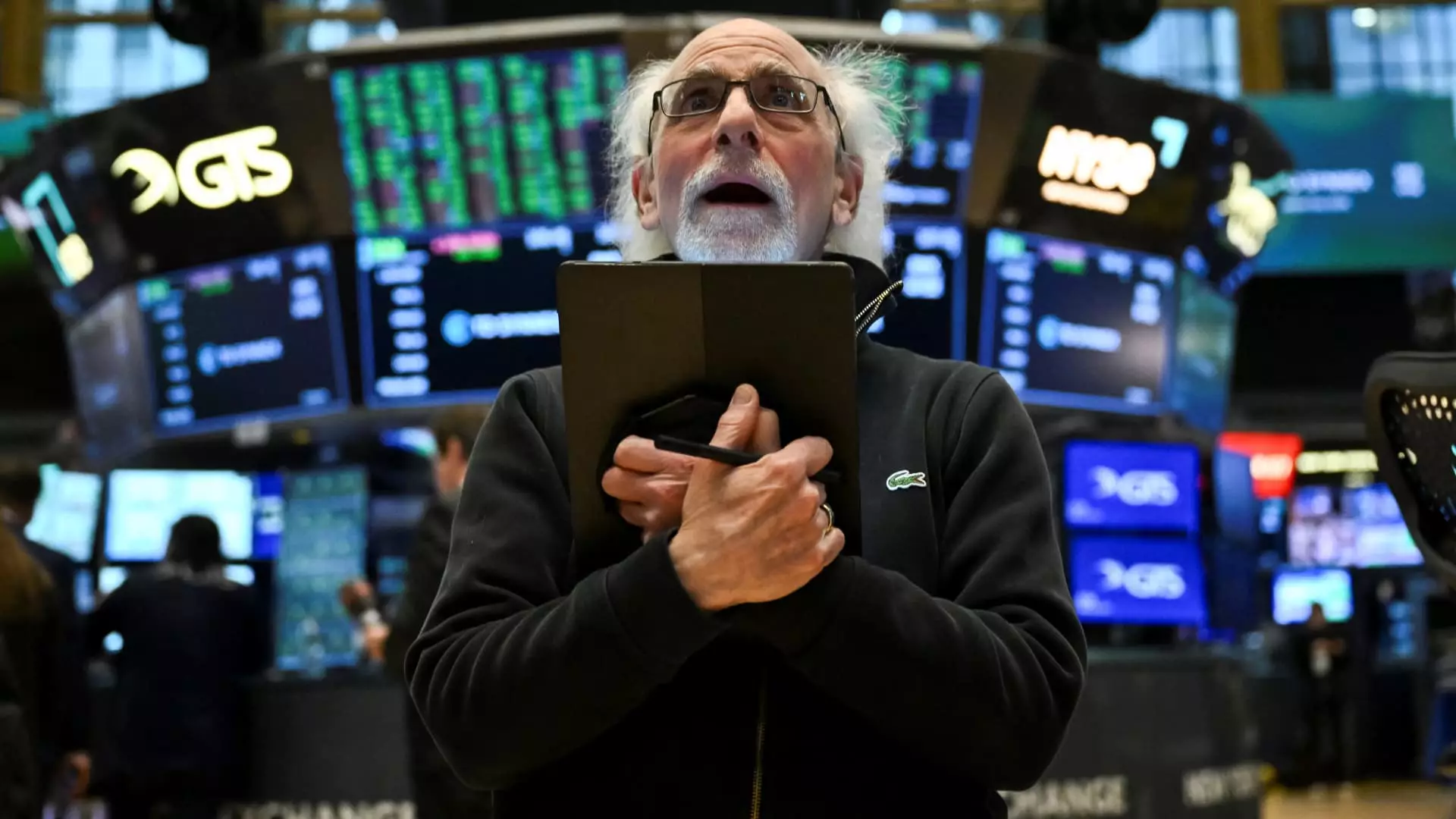In an astonishing twist of fate, the recent surge in stock prices due to an unexpected pause in tariff announcements sent ripples through the hedge fund industry, resulting in a dramatic short squeeze that is likely to be remembered for years. The scene was set as traders had bolstered short positions against U.S. stocks in anticipation of adverse market reactions to President Trump’s announcement of intensified tariffs—an action that was, unsurprisingly to many, more aggressive than anticipated. As is often the case in the world of finance, the reality turned out to be quite different, showcasing the paradoxical nature of market behaviors.
The surge fueled by a significant short covering frenzy underlines an essential truth about our economic landscape: it is riddled with unpredictability, perhaps more so now than ever before. Many hedge funds, confidently betting that share prices would drop, suddenly found themselves on the back foot, scrambling to cover their positions as the market rallied unexpectedly. The chaos culminated in the S&P 500 charting its third-largest gain since World War II—an ironic twist for those who had anticipated further economic downturns.
The Mechanism of Short Selling: Risk or Reward?
Short selling is both an art and a gamble that embodies the risk-reward dynamics inherent in the financial world. Hedge funds borrow shares they believe will lose value, selling them off to gain a quick profit if those predictions hold. However, if the opposite occurs—as it did this time—short sellers face stark realities, being compelled to buy shares at elevated prices to mitigate their losses. This creates a feedback loop where the need to cover short positions intensifies, driving shares even higher.
This phenomenon, referred to as a short squeeze, exemplifies the tightrope that traders walk. Following Wednesday’s dramatic turn of events, it became evident that the realm of hedge funds is undergirded by a sense of paranoia and hyperactivity. Jeff Kilburg, CEO of KKM Financial, encapsulates this sentiment perfectly: the “exit doors become so small because of these crowded trades.” Such moments of financial turbulence demand adaptability, as those unprepared for such volatility can quickly find themselves trapped in losing positions.
The Numbers Speak Volumes
The numbers following Wednesday’s dramatic trading session illustrate just how profound this shift was. A staggering 30 billion shares changed hands on U.S. exchanges, the heaviest trading day recorded in 18 years. Furthermore, reports indicated that short positions leading up to this day surpassed nearly double the levels seen at the onset of the COVID-19 pandemic. Hedge funds collectively acted as jittery combatants in a high-stakes poker game, blindsided by an unexpected turn.
Goldman Sachs highlighted that a basket of the most shorted stocks surged by 12.5%, outpacing the S&P 500’s impressive 9.5% gain. Essentially, fear dictated the mechanics of trade as the traditional structures governing market behavior warped under panic-induced buying pressure. Although there were genuine buyers in the market, the sheer force of shorts covering their bets was a defining element of the price surge, demonstrating how interconnected and sensitive our markets have become to shifts in sentiment.
What Lies Ahead: A Bleak Forecast?
The aftermath of this chaotic trading session left analysts and traders alike questioning what is to come. Markets pulled back significantly as the sobering realization that the economic environment, characterized by high tariffs and resulting uncertainty, was still fraught with risk. Traders are now left with lingering short positions, and as history shows, these views can ignite further volatility should another upward shift in stocks occur.
Bank of America echoed the notion that we may not yet be out of the woods. Their trading desk cautioned that the short covering process could be “far from over,” indicating that a large number of funds still regard their short positions as necessary hedges in a turbulent economic climate. If history serves as a guide, the combination of substantial short selling and thin market liquidity might create yet another perfect storm, potentially leading to even more erratic price swings in the coming days and weeks.
In a financial landscape plagued by uncertainty and emotional volatility, one thing is clear: the world of hedge funds operates on razor-thin margins, relying on the precarious interplay of fear, greed, and strategic positioning. Those who choose to dance in this arena must do so with both eyes open, as the repercussions for miscalculations can be monumental.

